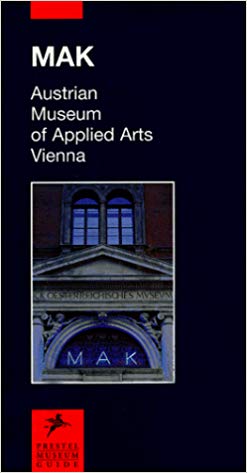V E R E N A F O R M A N E K
V E R E N A F O R M A N E K
Claude Monet..up to digital impressionism,
2002, Verlag Hatje Cantz
MAK Contemporary Art/ Applied Arts
Vienna (1989)

Mission by Peter Noever, 1986-2011,
today director Emeritus of the MAK Vienna/ Los Angeles

Former director Peter Noever defined the MAK-Austrian Museum Applied Arts / Contemporary Art as “an experimental laboratory for multiple practices in the fields of art, architecture, and design; a platform for interdisciplinary cultural discourse; a locus of sociological research; and a lively, high-profile forum for scholarship (including the projected availability of the MAK collection online), literature, film, and music.” He went on to explain its philosophy and activities in greater detail: “Far-sighted exponents of art, architecture, design, and the humanities are frequent visitors. For the MAK, art is the subversion of the existing and the established through experimentation: it should question assumptions, decode solutions, and shift perspectives. The MAK therefore operates experimentally, uncompromisingly, radically, for without risk there can be no art. This involves providing a refuge for art that is critical, on the fringe, not directly marketable, and/or avant-garde. The MAK is a place where art is born. It seeks to do justice to artists’ ideas and the intentions behind their work — and, if necessary, to defend them. Its exhibitions aim to pose questions, not to provide ready answers. For the MAK, what counts is artistic statements, is art itself. The duration and size of an exhibition is not crucial. We have consistently put on exhibitions that are provocative, controversial. The MAK operates as a workshop for artists, giving them the opportunity to do things in ways that would be impossible elsewhere, so it is not surprising that many world-renowned artists, including Vito Acconci, Chris Burden, Jenny Holzer, Magdalena Jetelová, and Donald Judd, have been frequent guests. The museum’s specific identity promotes a special way of working with artists, and this has resulted in close networking with leading visual artists, architects, and designers from around the world. The end of an MAK exhibition is never really the end—it is followed by ongoing contact and exchange. For the most part, MAK exhibitions are developed in direct collaboration with the participating artists. Artists’ interventions form the basis of the current setup: this is a constant at the MAK. In its exhibitions the MAK often plays a pioneering role, and this, in turn, inspires artists, designers, and architects. Some of the issues it addresses in its projects have at first been misunderstood, but subsequent years have seen them taken up by other institutions.”